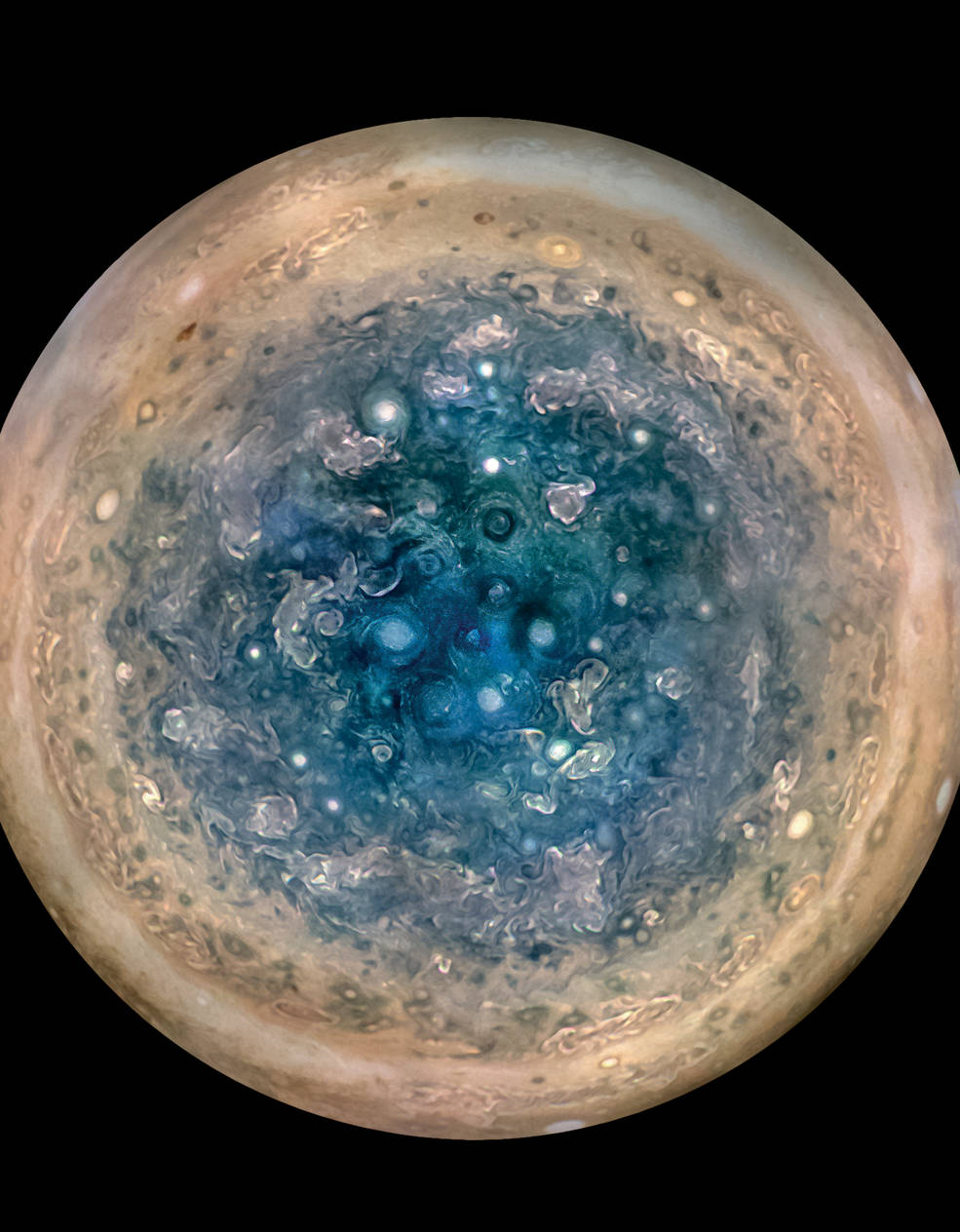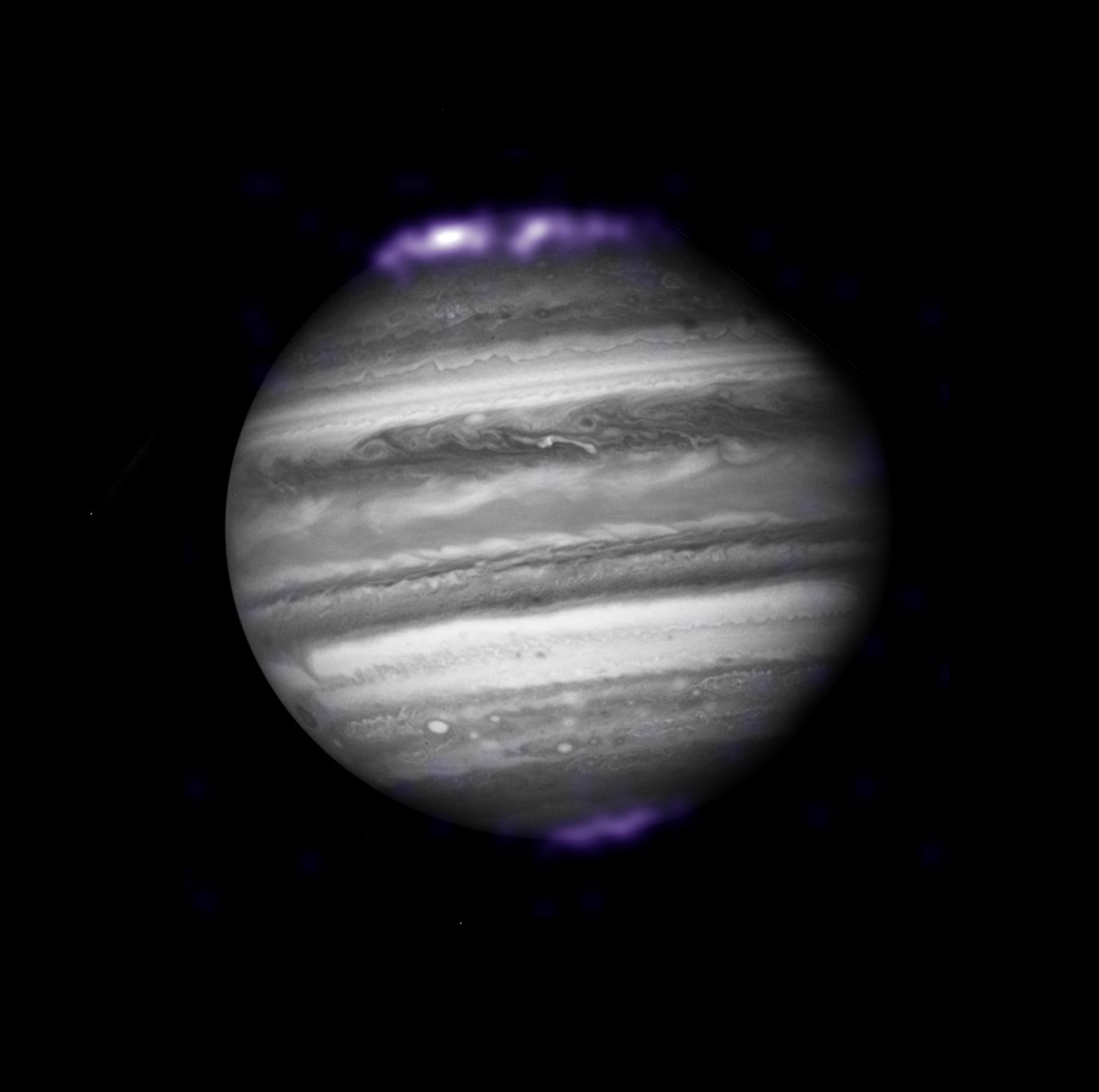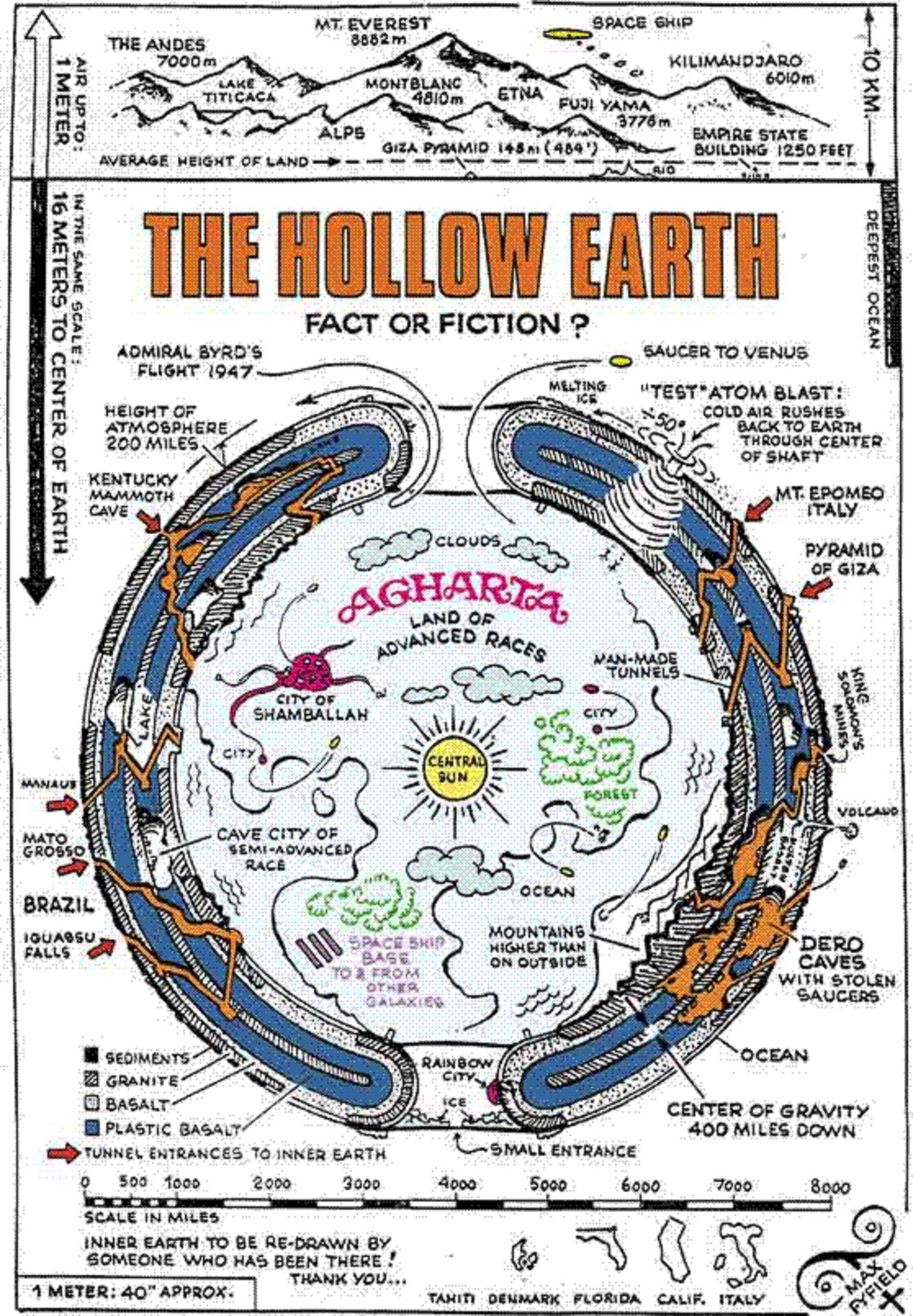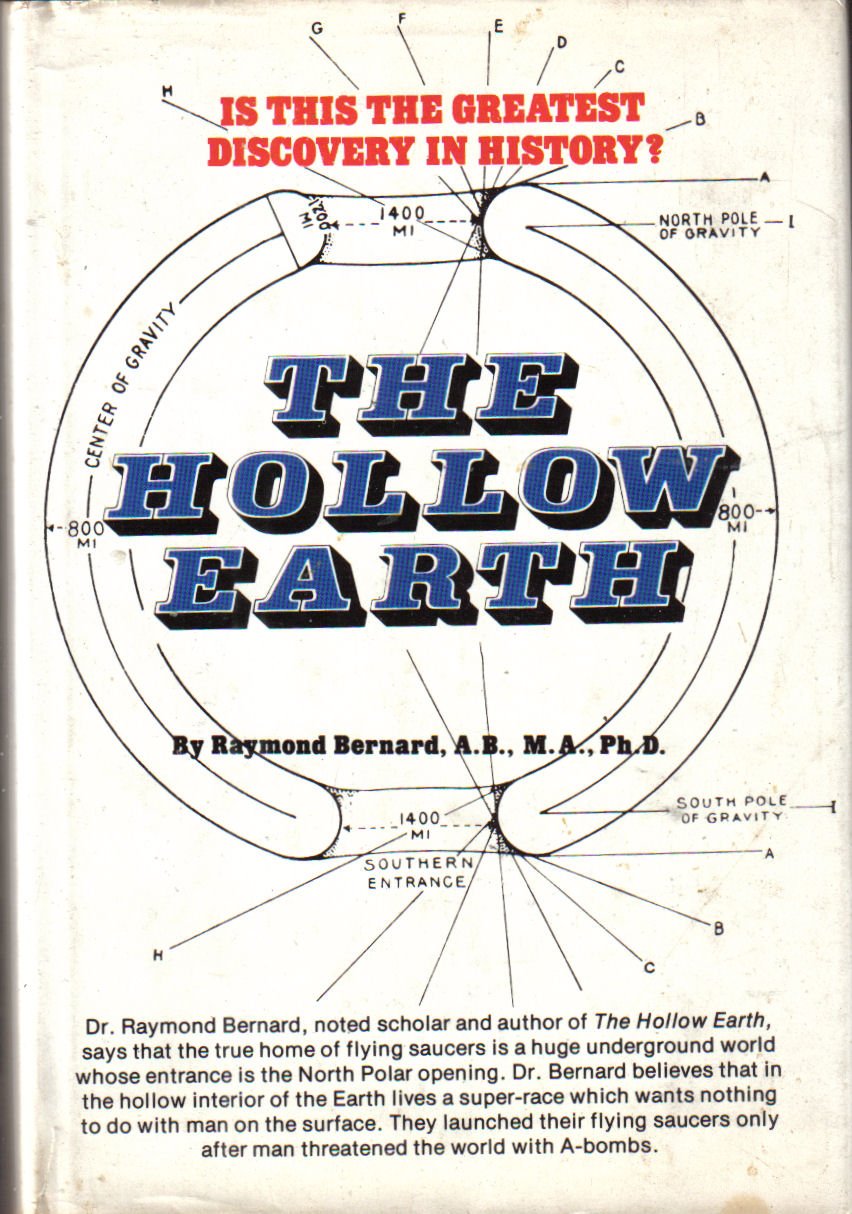 NASA’s Juno probe entered orbit around Jupiter a year ago, and has been gathering data ever since. Now the space agency is releasing spectacular images, such as this one showing Juptier’s south pole. It is a composite of several images, and shows multiple cyclones up to 600 miles in diameter raging around the pole. From NASA:
 Related:The Hollow Earth: The Greatest Geographical Discovery In History Made By Admiral Richard E. Byrd |
Tag: NASA
A History Of Space Travel
The guys from Pop Chart Lab celebrate the history of space travel, from 1961 to present day.

Make some space on your wall for our second infographic foray into the final frontier! This timeline of crewed space missions maps out over 400 extraterrestrial expeditions, spanning 1961 to present day. From the inaugural space race of Vostok vs. Mercury to the famed Apollo program to the International Space Station, this giant leap of a chart features stellar annotations for each mission, including full-color illustrations of all spacesuits and spacecraft. A simply stunning celestial survey, this chronicling of cosmic voyages is sure to have starry-eyed enthusiasts totally over the moon.
Joke Of The Day: Three Astronauts
The Hollow Earth: The Greatest Geographical Discovery In History Made By Admiral Richard E. Byrd
The Hollow Earth: The Greatest Geographical Discovery in History Made by Admiral Richard E. Byrd in the Mysterious Land Beyond the Poles – The True Origin of the Flying Saucers
Widely read and reprinted many times, Raymond Bernard’s book is considered by many to be the definitive treatise on the “Hollow Earth” theory. The book purports that the Earth has a hollow and habitable interior, with a small sun in place of a molten core, and is inhabited by a race of “Superhumans” who are the descendants of the exiled residents of the long lost continents of Atlantis and Lemuria. Bernard claimed that the true North and South poles had not yet been discovered, and that in their place are concave openings to the inner Earth.
Bernard quotes several diary entries and radio announcements by polar explorer Admiral Richard E. Byrd as being definitive proof for his theory that travel to the Earth’s interior was possible. Bernard claims that Byrd’s 1947 and 1956 expeditions took him “beyond the poles” into to a land of lush, green vegetation.
Bernard also popularized the theory that Atlantean inner-Earth beings invented flying saucers (or “vimanas”) many years ago, and were now visiting our realm.
From the original back cover copy for the book: Revealed! The Underground World of Supermen Discovered Under the North Pole!
Can you explain the following?
Why does one find tropical seeds, plants and trees floating in the fresh water of icebergs?
Why do millions of tropical birds and animals go farther north in the wintertime?
If it is not hollow and warm inside the Earth at the Poles, then why does colored pollen color the Earth for thousands of miles?
Why is it warmer at the Poles than 600 to 1000 miles away from them?
Why does the north wind in the Arctic get warmer as one sails north beyond 70° latitude?
On top of it all, Admiral Byrd is supposed to have made several journeys inside the earth by traveling through the holes in the poles.
Could there be anything to Bernard s bizarre claims?
For your reading enjoyment!
DEDICATED
To the Future Explorers of the New World that exists beyond North and South Poles in the hollow interior of the Earth. Who will Repeat Admiral Byrd’s historic Flight for 1,700 Miles beyond the North Pole and that of his Expedition for 2,300 Miles beyond the South Pole, entering a New Unknown Territory not shown on any map, covering an immense land area whose total size is larger than North America, consisting of forests, mountains, lakes, vegetation and animal life.
The aviator who will be the first to reach this New Territory, unknown until Admiral Byrd first discovered it, will go down in history as a New Columbus and greater than Columbus, for while Columbus discovered a new continent, he will discover a New World.
by
Dr. R. W. Bernard, B.A., M.A., Ph.D.
1964
FIELDCREST PUBLISHING CO., INC.
210 Fifth Avenue, New York 10, N.Y.
Note: Author is deceased and publishing company defunct. Rights are not reserved.
- Foreword
- Chapter 1: Admiral Byrd’s Epoch-Making Discovery
- Chapter 2: The Hollow Earth
- Chapter 3: William Reed’s Book, “Phantom of the Poles”
- Chapter 4: Marshall B. Gardner’s Book, ” A Journey to the Earth’s Interior Or Have the Poles Really Been Discovered?”
- Chapter 5: Was the North Pole Really Discovered?
- Chapter 6: The Origin of the Eskimos
- Chapter 7: The Subterranean Origin of the Flying Saucers
- Part 7.1: The Subterranean Origin of the Flying Saucers
- Part 7.2: Agharta, The Subterranean World
- Part 7.3: The Flight to the Land Beyond the North Pole
- Part 7.4: Underground Cities
- Chapter 8: Conclusion
- Flying Saucers, Propulsion and Relativity
- Comprehensive list of Dr. Bernard’s complete works
74 Prominent Medical And NASA Scientists Have Been Killed In The Last Few Years
An unusually high number of Medical and NASA scientist deaths in recent years. What’s going on?

Alberto Behar helped prove that there had once been water on Mars. He worked on two missions to Mars and was also a robotics expert who researched how robots function in harsh environments (such as under water and inside volcanoes). The unusually high number of scientist deaths in recent years has made people question the suspicious nature of his death.
Behar was an expert pilot; he was a flight instructor for both planes and helicopters – the weather conditions were clear that day and for some reason his plane just started to lose altitude. The Van Nuys Airport pilot Kashif Khursheed said “I can’t see what would be the cause of something like this. He was very knowledgeable, competent and thorough.”
This is just one of the most recent cases of a prominent scientist’s suspicious death. Over the past few years 74 leading medical and NASA scientists have died, almost all are officially labelled suicide or an accident.
Glenn Thomas was a World Health Organisation spokesperson; he was reportedly an expert on Ebola and AIDS, he was aboard Malaysia Airlines Flight 17 when it was shot down with approximately 100 other researchers.
Joep Lange, a leading AIDS researcher and former president of the International AIDS Society (IAS) was also aboard MH17. They were all on their way to an international AIDS conference. With one fell swoop a large portion of the leading AIDS experts were killed before they could attend a global conference.
Melissa Ketunuti, 35, was a pediatrician who specialized in cancer; she also worked on an AIDS fellowship in Botswana. She was hogtied and set on fire in the basement of her home in Philadelphia.
Dr Anne Szarewski, 53, was a cervical cancer expert. She pioneered the cervical cancer vaccine. Szarewski was found dead in her London home in December 2013. Her husband spent hours drilling through the front door that she had locked from the inside. When he found her she was dead. To this day no one knows what killed her. An inquiry into her death was launched but nothing conclusive was ever found.
Perhaps one of the most controversial scientist deaths in the last few years was that of Shane Truman Todd, 31. In June 2012 he was found dead in Singapore, he was an electrical engineer. He was working on a top-secret “one of a kind” machine for the Chinese that was believed to be a defense weapon. Shane told his family that he was not happy with what he was doing and he feared for his life, he was allegedly being asked to compromise U.S security. He quit his job and was due to leave China and fly home but died a week before his flight after his last day at work building this unknown machine. Foul play was suspected and his family began campaigning for the truth, Chinese official said they would look into the matter and try to determine if it was murder or suicide but as of yet there are no answers.

These are just a tiny fraction of the scientist that have died under suspicious circumstances. You can read about these and other mysterious scientist deaths by clicking here. All of these people were either leading medical experts or leading engineers. You have to ask what could they have known that would have led to their deaths? Or could it all simply be coincidence?
In a time where conspiracy is commonplace, it is increasingly difficult to differentiate between what could be a conspiracy and what is simply an unfortunate event. It is incredibly suspect why so many of these deaths are so odd. The people who were killed would have had access to sensitive information that government officials may not want disclosed.



